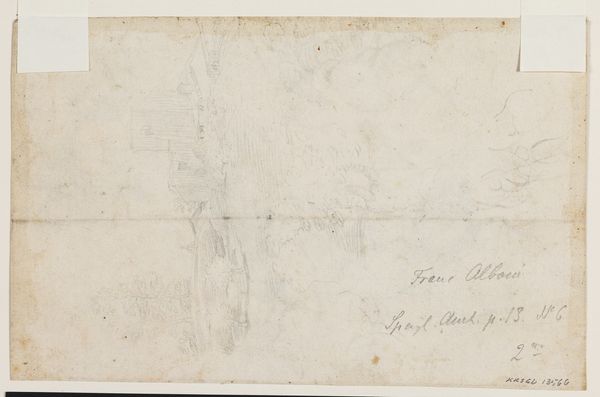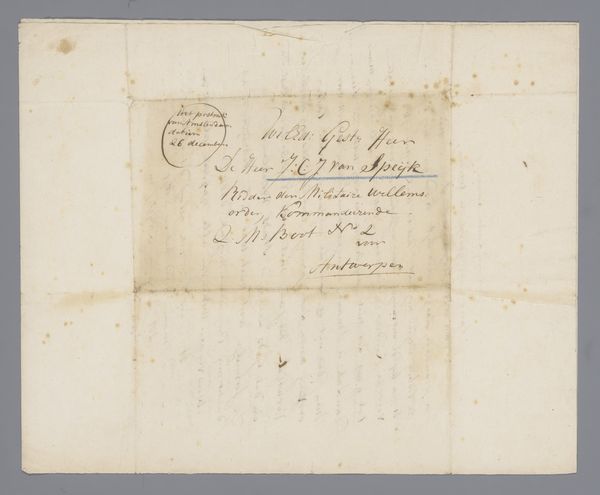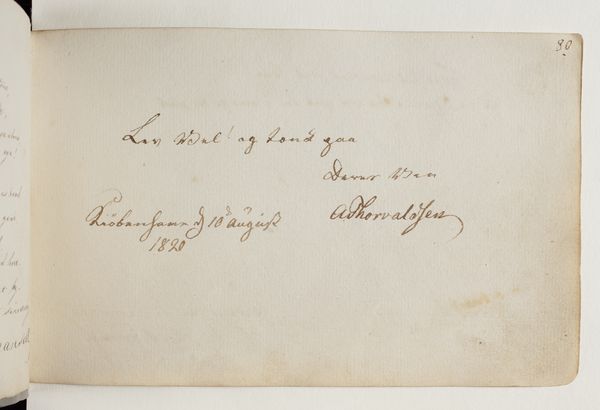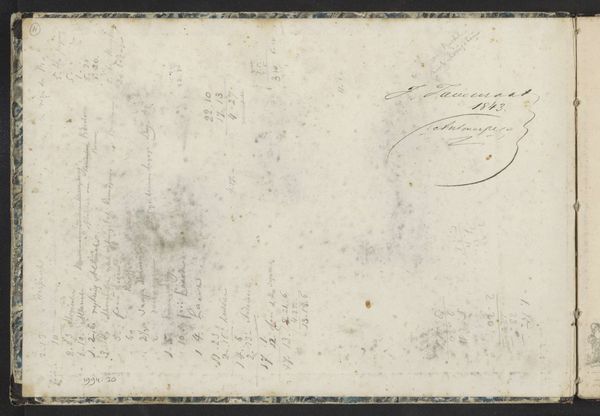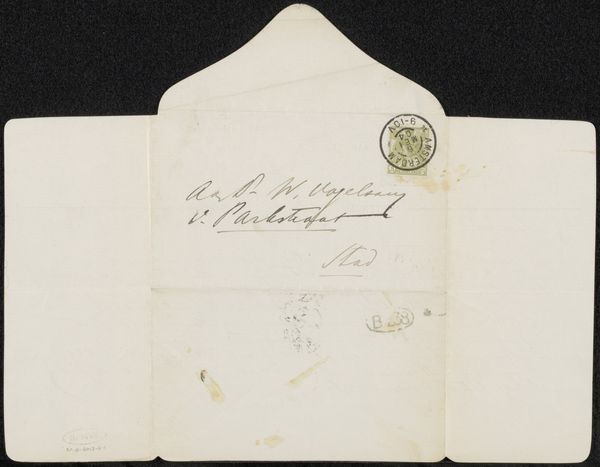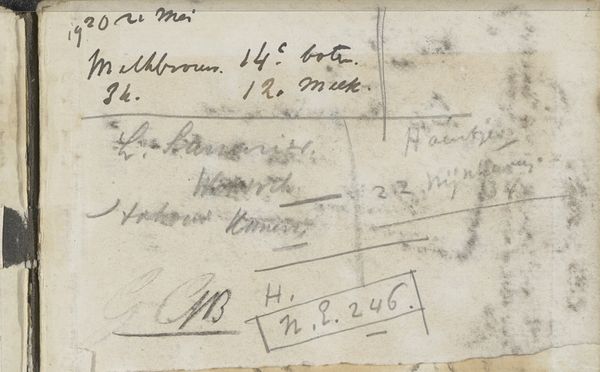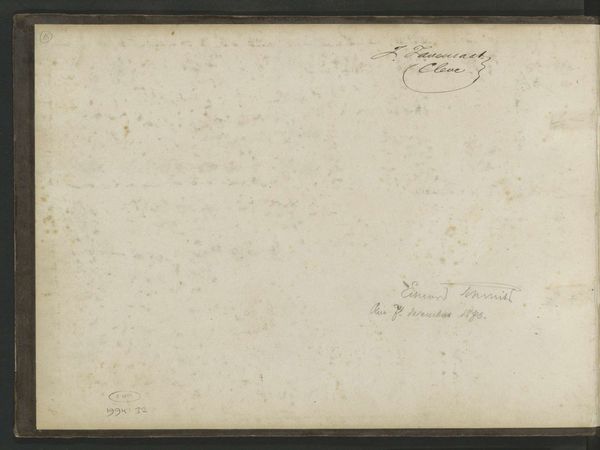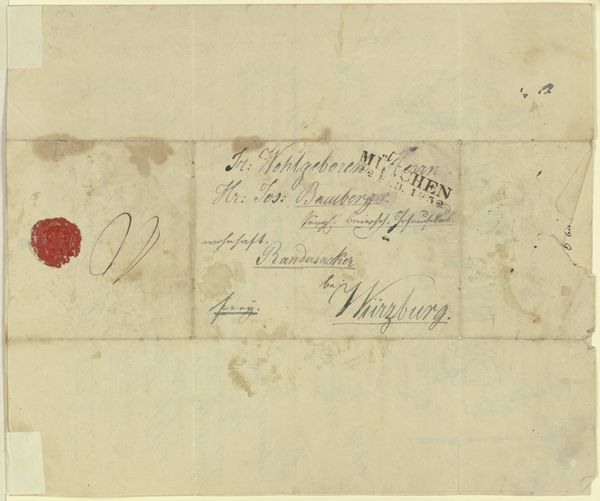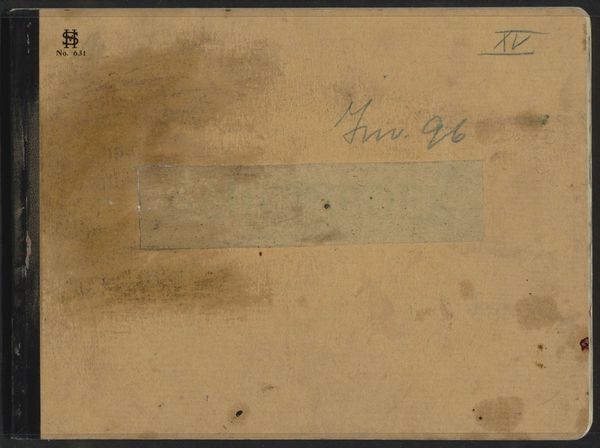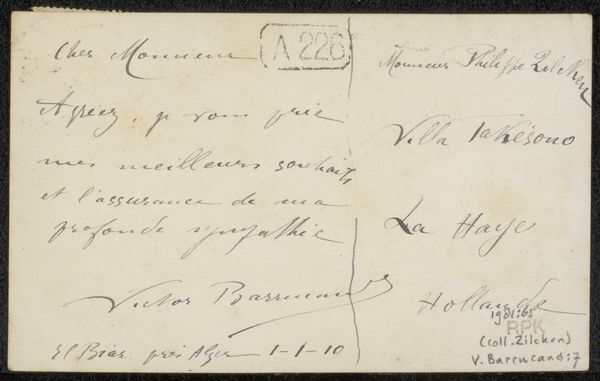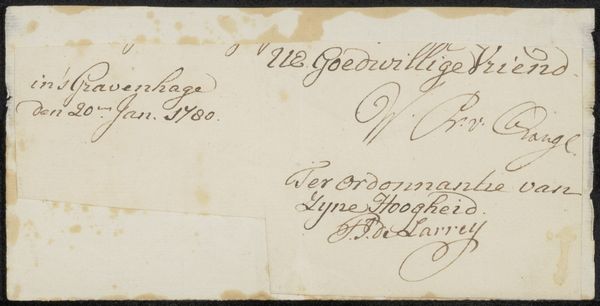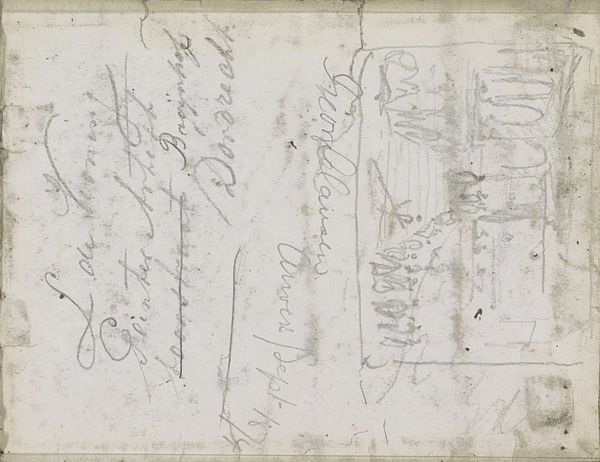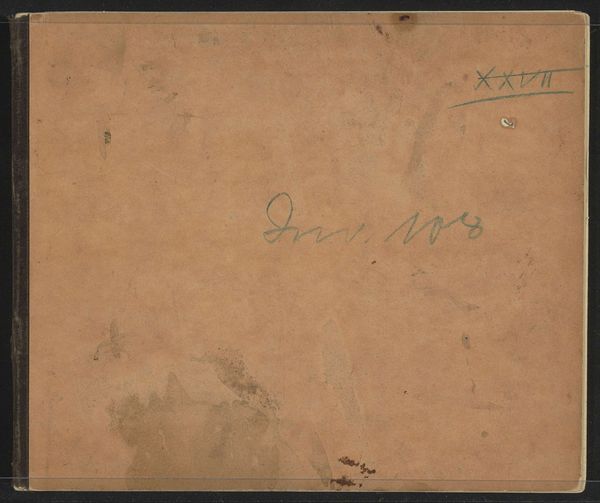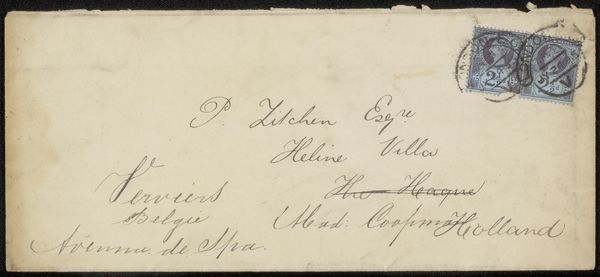
Copyright: Rijks Museum: Open Domain
This is Johann Sollerer's address card, date unknown. What might seem like a simple piece of ephemera actually opens a window into the cultural and institutional practices of eighteenth-century Europe. Consider the function of an address card: it's a tool for social networking, for maintaining connections within a specific milieu. Sollerer, who lived between 1747 and 1809, would have been part of a world of artistic patronage, of academies and salons, where reputation and access were crucial. The card itself, with its inscription, speaks to the importance of handwritten communication in an era before widespread printing or photography. The presence of museum markings also highlights the role of institutions in preserving and classifying such objects, turning them into historical artifacts. Understanding this card requires delving into the social history of art, exploring the networks of artists and patrons, and examining the systems that shaped artistic production. Archives, letters, and institutional records will tell us more.
Comments
No comments
Be the first to comment and join the conversation on the ultimate creative platform.
